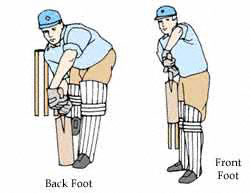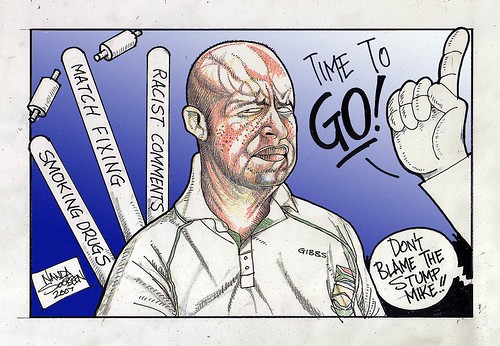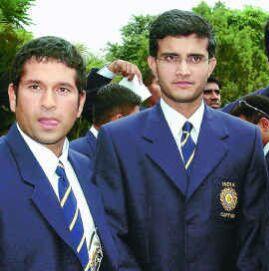A brief glance on international cricket in the year of 2010

There were more thrilling sights in world cricket in the year 2010 than Pakistan’s Mohammad Amir bowling and there were few more controversial too.The teenage Pakistan left-arm quick's entrancing spell of swing bowling saw Australia dismissed for just 88 at Headingley in July. But Amir and new partner Mohammad Asif, together with Pakistan captain Salman Butt, soon found themselves facing 'spot-fixing' allegations.
Salman Butt was accused by British tabloid ‘The News of the World’ of orchestrating a betting scam that saw Amir and Asif bowl deliberate no-balls to effect a 'spot-fixing' coup.
The trio's future is set to be decided by an International Cricket Council (ICC) tribunal hearing in the Qatari capital of Doha in January 2011.
Pakistan had banned three former captains Younus Khan, Mohammad Yousuf and Shoaib Malik earlier in the year after a wretched tour of Australia where they failed to win a single match and Shahid Afridi was fined for an incredible ball-biting incident in Perth.
And in November wicketkeeper Zulqarnain Haider fled Dubai, where Pakistan was playing against South Africa, for London saying his life was under threat from 'Match fixers'.
On the field game, England won a first major one-day title by beating Australia in the final of the World Twenty20 tournament in the Caribbean.
Hopes of an Ashes series win in Australia looked realistic after England's innings and 71-run victory in the second Test in Adelaide.
That followed a draw in the series opener in Brisbane marked by a hat-trick by Peter Siddle of Australia.
But Australia leveled with a 267-run win in the 4th Test at Perth.
Nevertheless Australia, so recently the kings of Test cricket, had dropped to fourth in the ICC rankings as 2010 drew to a close.
The year ended with South Africa pressing hard to replace India as the world's leading Test side with an innings and 25 runs victory in the first Test at Centurion stadium.
The Proteas' Dale Steyn looked the one genuine fast bowler in the modern game whose record that would not look out of place alongside those of some all-time great fast bowlers while Jacques Kallis cemented his position as the world's leading all-rounder.
In meanwhile Sri Lanka off-spinner Muttiah Muralitharan, whose unorthodox action remained controversial even when 'cleared' by the ICC, bowed out with a record 800 Test wickets before retiring from the test matches.
New Zealand's 2010 were exemplified by an embarrassing 4-0 one-day series loss to minnows Bangladesh in October.
India's Sachin Tendulkar set yet more batting records by becoming the first man to score 200 in a one-day international and the first to 50 Test centuries.
Chris Gayle of west Indies became only the fourth batsman in history to make two Test scores of over 300 with an innings of 333 against Sri Lanka in Galle last month but this was a rare highlight for the West Indies in another struggling year.
England's Ashes-winning all-rounder Andrew Flintoff and New Zealand fast bowler Shane Bond finally gave up their struggles with injury by retiring from all cricket while Australia quick Brett Lee quit Tests.
But the most notable retirement in 2010 was of South Africa's Makhaya Ntini, the first black African to represent his country, whose 13-year international career saw a fast bowler blessed with exceptional stamina more than justify his place on cricket grounds alone.
Split-innings matches were trialed in Australia, the ICC announced plans for a new Test championship and MCC experimented with a pink ball in a bid to probe the viability of day/night Tests.
It's a fair bet the pink ball would not have impressed Sir Alec Bedser, who died aged 91 in April.
Salman Butt was accused by British tabloid ‘The News of the World’ of orchestrating a betting scam that saw Amir and Asif bowl deliberate no-balls to effect a 'spot-fixing' coup.
The trio's future is set to be decided by an International Cricket Council (ICC) tribunal hearing in the Qatari capital of Doha in January 2011.
Pakistan had banned three former captains Younus Khan, Mohammad Yousuf and Shoaib Malik earlier in the year after a wretched tour of Australia where they failed to win a single match and Shahid Afridi was fined for an incredible ball-biting incident in Perth.
And in November wicketkeeper Zulqarnain Haider fled Dubai, where Pakistan was playing against South Africa, for London saying his life was under threat from 'Match fixers'.
On the field game, England won a first major one-day title by beating Australia in the final of the World Twenty20 tournament in the Caribbean.
Hopes of an Ashes series win in Australia looked realistic after England's innings and 71-run victory in the second Test in Adelaide.
That followed a draw in the series opener in Brisbane marked by a hat-trick by Peter Siddle of Australia.
But Australia leveled with a 267-run win in the 4th Test at Perth.
Nevertheless Australia, so recently the kings of Test cricket, had dropped to fourth in the ICC rankings as 2010 drew to a close.
The year ended with South Africa pressing hard to replace India as the world's leading Test side with an innings and 25 runs victory in the first Test at Centurion stadium.
The Proteas' Dale Steyn looked the one genuine fast bowler in the modern game whose record that would not look out of place alongside those of some all-time great fast bowlers while Jacques Kallis cemented his position as the world's leading all-rounder.
In meanwhile Sri Lanka off-spinner Muttiah Muralitharan, whose unorthodox action remained controversial even when 'cleared' by the ICC, bowed out with a record 800 Test wickets before retiring from the test matches.
New Zealand's 2010 were exemplified by an embarrassing 4-0 one-day series loss to minnows Bangladesh in October.
India's Sachin Tendulkar set yet more batting records by becoming the first man to score 200 in a one-day international and the first to 50 Test centuries.
Chris Gayle of west Indies became only the fourth batsman in history to make two Test scores of over 300 with an innings of 333 against Sri Lanka in Galle last month but this was a rare highlight for the West Indies in another struggling year.
England's Ashes-winning all-rounder Andrew Flintoff and New Zealand fast bowler Shane Bond finally gave up their struggles with injury by retiring from all cricket while Australia quick Brett Lee quit Tests.
But the most notable retirement in 2010 was of South Africa's Makhaya Ntini, the first black African to represent his country, whose 13-year international career saw a fast bowler blessed with exceptional stamina more than justify his place on cricket grounds alone.
Split-innings matches were trialed in Australia, the ICC announced plans for a new Test championship and MCC experimented with a pink ball in a bid to probe the viability of day/night Tests.
It's a fair bet the pink ball would not have impressed Sir Alec Bedser, who died aged 91 in April.








































 Like dancing, in cricket - it takes two to tango. tangos after tangos, I mean partnerships after partnerships - batsman take their team to victory. without a tango/partner - no batsman can't singly win a cricket match for his team!
Like dancing, in cricket - it takes two to tango. tangos after tangos, I mean partnerships after partnerships - batsman take their team to victory. without a tango/partner - no batsman can't singly win a cricket match for his team! Pakistan offspinner Saeed Ajmal has said the pain of losing the semifinal of the ICC World Twenty20 to Australia still lingers, having bowled the last over which conceded the game.
Pakistan offspinner Saeed Ajmal has said the pain of losing the semifinal of the ICC World Twenty20 to Australia still lingers, having bowled the last over which conceded the game.


















